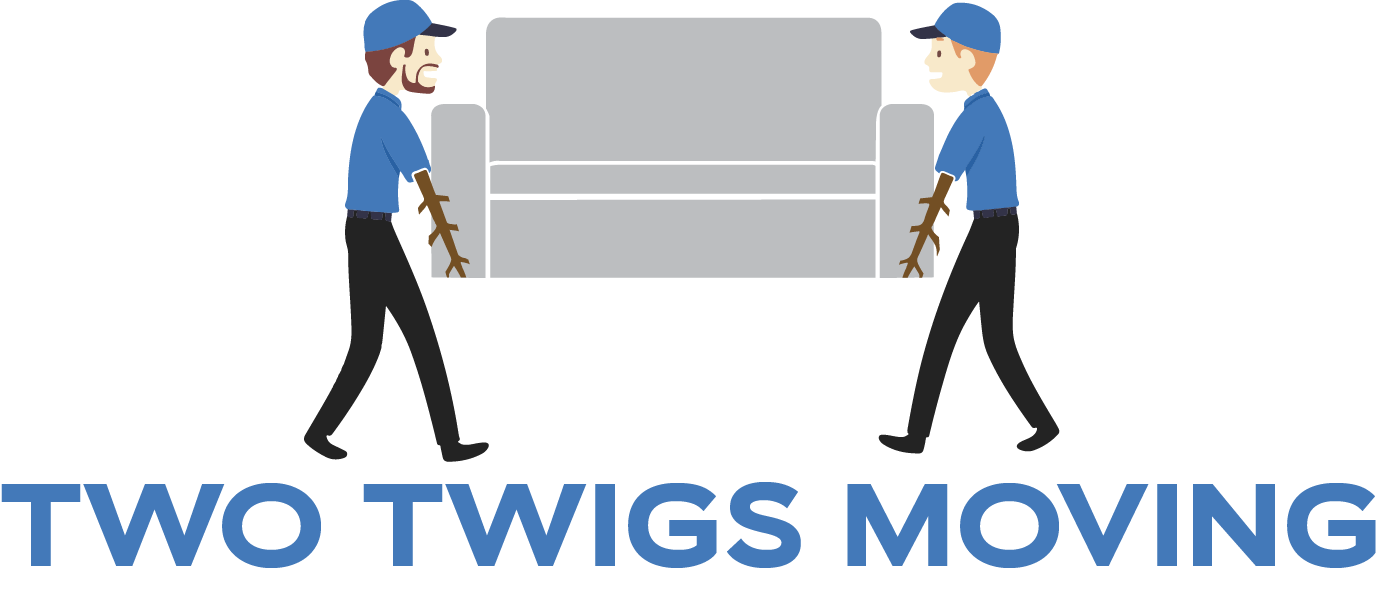Moving on short notice can feel overwhelming, but with the right approach, it’s manageable. Here’s how to tackle it:
- Start with a checklist: Prioritize tasks like hiring movers, packing essentials, and setting up utilities.
- Declutter quickly: Sort items into categories – keep, donate, sell, or toss. Use the 20/20 rule to decide: if it costs under $20 and takes less than 20 minutes to replace, let it go.
- Pack efficiently: Use household items like towels and clothing for wrapping fragile items. Label boxes clearly with room names and contents.
- Hire help if needed: Professional movers or packers can save time and ensure your belongings are handled carefully.
- Confirm details: Double-check moving arrangements, utility transfers, and address updates before the big day.
- Inspect your old home: Do a final walkthrough, clean thoroughly, and document the property’s condition with photos.
Whether you’re moving due to a sudden job change or an expiring lease, these steps help simplify the process and reduce stress.
Step 1: Create a Moving Checklist and Set Priorities
When you’re facing a last-minute move, a detailed checklist can be a lifesaver. It helps cut down on stress and keeps you zeroed in on what’s most important. Start by writing everything down, then refine your list to focus on the tasks that absolutely need to get done first. Once your priorities are clear, adjust your plan to fit the tight timeline, making sure to tackle the most pressing items immediately.
Identify Your Most Urgent Tasks
Kick things off by pinpointing tasks that can’t wait. These are the essentials – like booking movers, packing the necessities, and setting up utilities. As moving expert Laura Mueller advises:
"Start with the logistics" by hiring movers or renting a truck immediately.
Utilities should be high on your list. No one wants to arrive at a new home without electricity, water, or internet. If you haven’t already lined up professional movers, make this a priority – availability can be limited when you’re short on time. If you’re moving to or from Charlotte, Charleston, or Greenville, Two Twigs Moving is a great option to consider for reliable help.
After handling the basics, shift your focus to tasks with deadlines or those that involve coordination with others. Notify your employer about your address change, transfer medical records, and, if you have kids, arrange school transfers. These administrative tasks often take longer than expected, so tackling them early is key to avoiding last-minute chaos.
Use Simple Tools to Track Progress
You don’t need complicated tools to stay on top of everything. A simple written list or a phone app can work wonders in keeping you organized. The key is to pick a system you’ll actually use.
For digital tracking, any basic productivity app can help you manage your tasks. Break things down by deadlines and dates so you can see what needs immediate attention versus what can wait until tomorrow. You might even want to create separate lists for different categories – like packing, administrative tasks, and moving day essentials.
If others are helping with the move, share your checklist to make sure everyone is on the same page and tasks are divided efficiently. This way, nothing falls through the cracks.
Step 2: Sort Through Your Belongings Fast
Sorting your belongings quickly can save time and reduce the hassle of packing. The key is to move fast and avoid getting bogged down by sentimental attachments.
Group Items into 4 Categories
One effective method is to divide everything into four categories: keep, donate, sell, and toss/recycle. This system forces you to make immediate decisions about each item, eliminating the dreaded "maybe" pile. To streamline the process, set up four designated spots in each room and evaluate each item with a simple question: Would I want this back if it were ruined? While it may seem harsh, this approach helps you identify what truly matters.
For even faster decisions, try the 20/20 Rule: if replacing an item costs less than $20 and takes under 20 minutes, let it go. This rule is perfect for things like basic kitchen tools, inexpensive electronics, or old linens you’ve been holding onto "just in case."
- Keep items you use often or that hold irreplaceable sentimental value, like daily essentials or important documents.
- Donate gently used clothes, books, or household goods that others can benefit from.
- Sell items of higher value that you no longer need but could earn you some extra cash.
- Toss or recycle anything broken, expired, or beyond repair.
Decluttering expert Barbara Hemphill sums it up well:
"Clutter is nothing more than postponed decisions."
Don’t overthink it – if you hesitate for more than a few seconds, chances are you don’t need it. Trust your instincts and keep moving. Tackling one room at a time can make the task feel less overwhelming. To keep your energy up, set a timer – say 30 minutes for a bedroom or 45 minutes for the kitchen – and stick to it.
Pack a Bag with Daily Necessities
Once you’ve sorted everything, set aside the essentials you’ll need for the first few days in your new home. Pack these items in a clearly labeled bag or suitcase that stays with you during the move.
Your essentials bag should include:
- Toiletries: toothbrush, toothpaste, soap, shampoo
- Medications
- A few changes of clothes
- Phone chargers
- Important documents: lease agreements, insurance papers, ID
- Basics like toilet paper, towels, and bed linens
If you have kids, pack their favorite toys, snacks, and comfort items to help them settle in. For pets, include food, leashes, and any medications they might need.
Step 3: Pack Your Items Efficiently
Packing smartly not only saves time but also helps protect your belongings during the move. By using household items creatively and organizing your packing process, you can make moving day much smoother. Pair these efforts with clear labeling and, if needed, professional packing services to ensure everything goes off without a hitch.
Use Household Items for Packing
When you’re short on packing supplies like bubble wrap or packing paper, household items can be a lifesaver. Towels, blankets, and clothing can double as protective wrapping for fragile belongings. For instance, wrap dishes in kitchen towels, use sweaters to cushion picture frames, and secure electronics with blankets. This approach not only protects your items but also makes efficient use of what you already have.
Get creative with smaller items, too. Socks and t-shirts are perfect for wrapping glassware or other delicate pieces, while larger items like lamps or vases can be safely cushioned with thick bath towels secured with tape.
Other household items can also pull double duty. Garbage bags are great for packing soft items like pillows, comforters, or out-of-season clothes. Laundry baskets can hold heavier items and later serve as storage, while suitcases with wheels are ideal for transporting heavier belongings like books.
Label Boxes Clearly
Once your items are packed up, clear labeling is the key to staying organized. A well-labeled box can make unpacking far less stressful. Use a permanent marker and label all visible sides of each box to ensure the information is easy to spot.
Your labels should include three main details: the room where the box belongs, a brief description of its contents, and any special handling instructions. For example, instead of writing "kitchen stuff", be specific: "Kitchen – pots, pans, cooking utensils – FRAGILE." This level of detail will save you from opening multiple boxes just to find what you need.
To make things even easier, consider adding a color-coding system. Assign each room a color – like blue for bedrooms, red for the kitchen, and green for the living room. This visual system helps ensure boxes end up in the correct rooms right away.
Ana Matos from Aardvark Movers emphasizes the importance of this step:
"Professional movers consistently emphasize that effective box labeling is a crucial element in creating an organized, stress-free moving experience."
For items you’ll need immediately after the move, mark boxes with labels like "OPEN FIRST" or "ESSENTIALS." These might include bedding, basic kitchen tools, or bathroom supplies. Numbering your boxes and keeping a simple inventory list can also help you track down specific items later.
Consider Professional Packing Services
If you’re pressed for time or dealing with valuable or fragile items, professional packers can make a huge difference. They’re not only faster but also more efficient – one experienced packer can handle about 5–6 standard moving boxes in an hour and fit nearly twice as much into a box compared to someone with less experience.
Hiring professional packers typically costs $50–$60 per hour, but the time and stress they save can be well worth it. Kyle Richardson, Owner of RS Moving & Warehousing, explains:
"Professional packing services offer numerous advantages, making your move smoother and less stressful. They save you time by packing efficiently, reduce the stress associated with moving, and provide the freedom to focus on other essential tasks."
Some companies, like Two Twigs Moving, offer full-service packing for everything from everyday items to specialty pieces like pianos or pool tables. They use high-quality packing materials and expert techniques to ensure your belongings arrive safely.
If you choose to work with professional packers, be sure to point out items that need special care, such as family heirlooms, electronics, or anything with sentimental value. Many moving companies also include insurance for items they pack, which offers extra peace of mind. As Gerber Transfer notes:
"When you hire professional packers, your belongings are often covered by the moving company’s insurance. This means that in the rare event of damage, you’ll be compensated."
If hiring professionals for the entire move isn’t in your budget, consider a hybrid approach. Let them handle your most fragile or valuable items, while you pack the rest. This way, you get expert care where it matters most without overspending.
sbb-itb-a5538b6
Step 4: Confirm All Moving Day Details
Proper planning helps ensure moving day goes smoothly, even with a packed schedule. By double-checking key details like timing, payments, and logistics, you can avoid unnecessary stress and delays.
Verify Details with Your Moving Company
Touch base with your moving company the evening before or early on moving day to confirm everything is set. Double-check the moving date, the crew’s arrival time, and get the name and contact details for the crew leader. Don’t forget to go over any building-specific requirements, such as elevator reservations, parking rules, or entry codes.
Make sure you’re clear on payment methods and have the agreed amount ready beforehand. If you’re using a full-service company like Two Twigs Moving, they’ll likely review an inventory list with you and discuss items needing special care. This is a great opportunity to point out any fragile or high-value belongings.
Also, keep an eye on the weather. If rain or extreme temperatures are in the forecast, talk to your movers about contingency plans so you know what adjustments might be needed.
Once you’ve finalized these details, you can shift your attention to getting your new home ready.
Set Up Utilities at Your New Home
There’s nothing worse than arriving at your new home to find the lights don’t work or there’s no running water. To avoid this, arrange to transfer or activate utilities – electricity, water, gas, internet, cable, and trash services – about one to two weeks before moving day.
When contacting your current utility providers, schedule shutoff dates three to four weeks in advance. For your new place, aim to have services turned on the day before you move in, just in case there are any last-minute hiccups. Many providers now offer online account setup, which can speed things up and make managing your services easier. Be sure to request meter readings for new accounts to ensure you’re only billed for what you use. If some utilities are covered by your rent, double-check your lease or ask your landlord to avoid setting up unnecessary accounts.
Follow up with utility companies a few days before the move, and on moving day, verify that everything is working properly.
Notify Everyone of Your Address Change
Once logistics are squared away, update your address to stay connected and avoid missing important mail. File a change-of-address request with the United States Postal Service at least a week before moving day. This can be done online through the official USPS website for a small fee – just be cautious of scam sites charging more.
Inform government agencies, banks, insurance companies, subscription services, your employer, and close friends or family about your new address. This ensures you won’t miss bills, important documents, or personal correspondence as you settle into your new home.
Step 5: Do a Final Check of Your Old Home
With logistics handled and packing complete, taking one last walk through your old home is a must. This step helps ensure you haven’t missed anything and can prevent future disputes. If you’re renting, it’s also key to securing your full security deposit.
Inspect Every Room and Storage Area
Even when you think you’ve packed everything, it’s surprisingly easy to leave something behind. To avoid this, go through every room and storage space methodically.
Start with lesser-used areas like the garage, basement, or attic, and then move to the main living spaces. Open and check every closet, cabinet, and drawer – don’t forget to look behind them. Pay attention to high shelves, window sills, medicine cabinets, and under-sink storage. Also, inspect under furniture, behind appliances, in crawl spaces, and in outdoor storage areas. Wall-mounted items like mirrors or picture frames might also hide forgotten items.
Secure and Clean the Property
Before leaving, make sure everything is locked up and in order. Turn off appliances, secure all windows and doors, and do a final walk-through to ensure lights are off, faucets aren’t dripping, and the thermostat is set appropriately for an unoccupied home.
Cleaning is another critical step, especially for renters aiming to get their deposit back. The average cost of professional move-out cleaning in 2025 is about $360, with additional services ranging from $150 to $400. If you prefer to clean yourself, focus on wiping down all surfaces, cleaning windows, fixtures, and floors, and repairing any wall damage. If you painted the walls a different color, consider repainting them back to the original shade.
"Creating a move-out cleaning checklist – and getting to cross it off as I go – is one of the best ways to get quick hits of satisfaction and accomplishment during this tedious moving task." – Alex Keight, PODS Blog Contributor
Document the Home’s Condition with Photos
Taking photos of the property is a smart way to protect yourself from disputes. These images serve as proof of the home’s condition when you leave, which is especially helpful for recovering your security deposit.
Capture detailed photos of every room, paying special attention to cleaned or repaired areas. Include close-ups of appliances, lighting, HVAC systems, and areas landlords typically inspect, like water damage spots or scuff-prone walls. If there are pre-existing issues, document them as well to avoid being held responsible later.
"Capturing the state of your belongings and property during a move is essential for protecting yourself against potential disputes." – Jenna Weinerman, VP of Marketing at Updater
For added peace of mind, take these photos during your final walkthrough, ideally with your landlord present. This creates a shared record of the property’s condition when you hand over the keys.
Conclusion: Making Your Last-Minute Move Work
Every step in the process matters when you’re tackling a last-minute move. While it might feel overwhelming, focusing on quick, strategic actions can make all the difference.
Start by making fast, practical decisions. Pack only the essentials first, and label your boxes clearly to make unpacking easier once you’re in your new space.
When time is tight, turning to professionals can simplify the process significantly. For instance, Two Twigs Moving offers flexible services designed for last-minute moves. Their team of background-checked movers can handle everything from packing delicate items to taking apart furniture. With over 180 five-star reviews, they’ve built a reputation for ensuring belongings are transported safely.
"At Two Twigs Moving, we handle every step of your move for a seamless, stress-free experience. Our professionally trained movers manage the entire process – from full-service packing and careful loading to secure transportation and efficient unloading – all while ensuring your items arrive safely."
FAQs
What is the 20/20 rule, and how can it make last-minute decluttering easier during a move?
The 20/20 rule is a handy tip for decluttering when you’re in a rush to move. Here’s how it works: if an item can be replaced for less than $20 and in under 20 minutes, it’s okay to let it go. This rule helps you make quick decisions about what to keep and what to part with, cutting down on stress and saving precious time.
By concentrating on things that are both inexpensive and easy to replace, the 20/20 rule simplifies packing and creates more room for the essentials. It’s a practical way to lighten your load when every minute counts!
What are some creative ways to pack fragile items if I run out of packing supplies?
If you’re running low on packing supplies, everyday household items can come to the rescue for protecting fragile belongings. Start by wrapping breakable items individually in soft materials like towels, blankets, or even clothing. These provide a layer of cushioning to keep your items safe. To keep things from moving around inside boxes, fill any empty spaces with crumpled paper, socks, or additional clothing.
You can also get creative by repurposing materials like plastic bags or plastic wrap to add extra padding. Once everything is in place, secure it with tape to keep items stable during transit. These practical hacks let you protect your fragile items without needing specialized packing materials, making the moving process a bit easier!
How can I make sure my utilities are ready at my new home before moving day?
To make sure your utilities are up and running when you move in, reach out to your utility providers about two to four weeks before your moving date. Arrange activation for services like electricity, water, gas, internet, and sewer, and confirm the start dates to avoid any service gaps.
Clearly communicate your move-out and move-in dates, and ask if any deposits are needed for setting up new accounts. For an easy transition, try to have all services active at least two days before your move so you can settle in without any hassle.


.svg)


